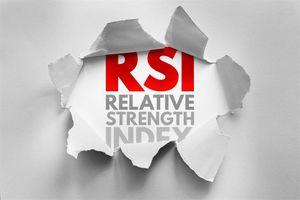NEW YORK, Dec. 05, 2022 (GLOBE NEWSWIRE) -- The Boards of Trustees of the PIMCO closed-end funds below (each, a “Fund” and, collectively, the “Funds”) have declared a special year-end distribution for each Fund’s common shares as summarized below. The distributions are payable on December 22, 2022 to shareholders of record on December 15, 2022, with an ex-dividend date of December 14, 2022. In addition to the regular monthly dividends, these special year-end distributions are being paid to allow the Funds to meet its 2022 distribution requirements for federal excise tax purposes. The Fund’s total distributions will be taxable to shareholders in 2022.
| Distribution Per Share | |||||||||
| Fund | NYSE Symbol | Net Income | Short-Term Capital Gains | Long-Term Capital Gains | Total | ||||
| PIMCO Corporate & Income Strategy Fund | PCN | $0.150000 | $0.000000 | $0.000000 | $0.150000 | ||||
| PIMCO Corporate & Income Opportunity Fund | PTY | $0.150000 | $0.000000 | $0.000000 | $0.150000 | ||||
| PIMCO Access Income Fund | PAXS | $0.520000 | $0.000000 | $0.000000 | $0.520000 | ||||
| PIMCO Dynamic Income Fund | PDI | $0.650000 | $0.000000 | $0.000000 | $0.650000 | ||||
| PIMCO Dynamic Income Opportunities Fund | PDO | $0.960000 | $0.000000 | $0.000000 | $0.960000 | ||||
| PIMCO California Municipal Income Fund | PCQ | $0.000000 | $0.009900 | $0.008000 | $0.017900 | ||||
Distributions may include ordinary income, net capital gains and/or a return of capital. Generally, a return of capital occurs when the amount distributed by a Fund includes a portion of (or is comprised entirely of) your investment in the Fund in addition to (or rather than) your pro-rata portion of the Fund’s net income or capital gains. A Fund’s distributions in any period may be more or less than the net return earned by the Fund on its investments, and therefore should not be used as a measure of performance or confused with “yield” or “income.” A return of capital is not taxable; rather it reduces a shareholder’s tax basis in his or her shares of a Fund.
If a Fund estimates that a portion of a distribution may be comprised of amounts from sources other than net investment income, as determined in accordance with its internal policies, accounting records and related accounting practices, the Fund will notify shareholders of record of the estimated composition of such distribution through a Section 19 Notice. For these purposes, a Fund estimates the source or sources from which a distribution is paid, to the close of the period as of which it is paid, in reference to its internal accounting records and related accounting practices. If, based on such accounting records and practices, it is estimated that a particular distribution does not include capital gains or paid-in surplus or other capital sources, a Section 19 Notice generally would not be issued. It is important to note that differences exist between a Fund’s daily internal accounting records and practices, the Fund’s financial statements presented in accordance with U.S. GAAP, and recordkeeping practices under income tax regulations. For instance, a Fund’s internal accounting records and practices may take into account, among other factors, tax-related characteristics of certain sources of distributions that differ from treatment under U.S. GAAP. Examples of such differences may include, among others, the treatment of paydowns on mortgage-backed securities purchased at a discount and periodic payments under interest rate swap contracts. Accordingly, among other consequences, it is possible that a Fund may not issue a Section 19 Notice in situations where the Fund’s financial statements prepared later and in accordance with U.S. GAAP and/or the final tax character of those distributions might later report that the sources of those distributions included capital gains and/or a return of capital. Please visit www.pimco.com for the most recent Section 19 Notice, if applicable, and most recent shareholder reports for additional information regarding the estimated composition of distributions. Final determination of a distribution’s tax character will be provided to shareholders when such information is available.
The tax treatment and characterization of a Fund’s distributions may vary significantly from time to time because of the varied nature of the Fund’s investments. For example, a Fund may enter into opposite sides of multiple interest rate swaps or other derivatives with respect to the same underlying reference instrument (e.g., a 10-year U.S. treasury) that have different effective dates with respect to interest accrual time periods for the principal purpose of generating distributable gains (characterized as ordinary income for tax purposes) that are not part of the Fund’s duration or yield curve management strategies. In such a “paired swap transaction”, the Fund would generally enter into one or more interest rate swap agreements whereby the Fund agrees to make regular payments starting at the time the Fund enters into the agreements equal to a floating interest rate in return for payments equal to a fixed interest rate (the “initial leg”). The Fund would also enter into one or more interest rate swap agreements on the same underlying instrument, but take the opposite position (i.e., in this example, the Fund would make regular payments equal to a fixed interest rate in return for receiving payments equal to a floating interest rate) with respect to a contract whereby the payment obligations do not commence until a date following the commencement of the initial leg (the “forward leg”).
A Fund may engage in investment strategies, including those that employ the use of derivatives, to, among other things, seek to generate current, distributable income, even if such strategies could potentially result in declines in the Fund’s net asset value. A Fund’s income and gain-generating strategies, including certain derivatives strategies, may generate current income and gains taxable as ordinary income sufficient to support monthly distributions even in situations when the Fund has experienced a decline in net assets due to, for example, adverse changes in the broad U.S. or non-U.S. equity markets or the Fund’s debt investments, or arising from its use of derivatives. Because some or all of these transactions may generate capital losses without corresponding offsetting capital gains, portions of a Fund’s distributions recognized as ordinary income for tax purposes (such as from paired swap transactions) may be economically similar to a taxable return of capital when considered together with such capital losses. The tax treatment of certain derivatives in which a Fund invests may be unclear and thus subject to recharacterization. Any recharacterization of payments made or received by a Fund pursuant to derivatives potentially could affect the amount, timing or character of Fund distributions. In addition, the tax treatment of such investment strategies may be changed by regulation or otherwise.
The common shares of the Funds trade on the New York Stock Exchange. As with any stock, the price of a Fund’s common shares will fluctuate with market conditions and other factors. If you sell your common shares of a Fund, the price received may be more or less than your original investment. Shares of closed-end investment management companies, such as the Funds, frequently trade at a discount from their net asset value and may trade at a price that is less than the initial offering price and/or the net asset value of such shares. Further, if a Fund’s shares trade at a price that is more than the initial offering price and/or the net asset value of such shares, including at a substantial premium and/or for an extended period of time, there is no assurance that any such premium will be sustained for any period of time and will not decrease, or that the shares will not trade at a discount to net asset value thereafter.
The Funds’ daily New York Stock Exchange closing market prices, net asset values per share, as well as other information, including updated portfolio statistics and performance are available at pimco.com/closedendfunds or by calling the Funds’ shareholder servicing agent at (844) 33-PIMCO. Updated portfolio holdings information about a Fund will be available approximately 15 calendar days after such Fund’s most recent fiscal quarter end, and will remain accessible until such Fund files a shareholder report or a publicly available Form N-PORT for the period that includes the date of the information.
A Fund’s shares do not represent a deposit or obligation of, and are not guaranteed or endorsed by, any bank or other insured depository institution, and are not insured by the Federal Deposit Insurance Corporation, the Federal Reserve Board or any other government agency. You may lose money by investing in a Fund. Certain risks associated with investing in a Fund are summarized below.
An investor should consider, among other things, a Fund’s investment objectives, risks, charges and expenses carefully before investing. A Fund’s annual report contains (or will contain) this and other information about the Fund.
A word about risk:
Investing in the bond market is subject to risks, including market, interest rate, issuer, credit, inflation risk, and liquidity risk. The value of most bonds and bond strategies are impacted by changes in interest rates. Bonds and bond strategies with longer durations tend to be more sensitive and volatile than those with shorter durations; bond prices generally fall as interest rates rise, and low interest rate environments increase this risk. Reductions in bond counterparty capacity may contribute to decreased market liquidity and increased price volatility. Bond investments may be worth more or less than the original cost when redeemed. Bank loans are often less liquid than other types of debt instruments and general market and financial conditions may affect the prepayment of bank loans, and as such the prepayments cannot be predicted with accuracy. There is no assurance that the liquidation of any collateral from a secured bank loan would satisfy the borrower’s obligation, or that such collateral could be liquidated. Contingent Convertible (“Co-co”) Bonds are bonds that are converted into equity of the issuing company if a pre-specified trigger occurs. Co-cos are subject to a different type of risk from traditional bonds and may result in a partial or total loss of value or may be converted into shares of the issuing company which may also have suffered a loss in value. Collateralized Loan Obligations (CLOs) may involve a high degree of risk and are intended for sale to qualified investors only. Investors may lose some or all of the investment and there may be periods where no cash flow distributions are received. CLOs are exposed to risks such as credit, default, liquidity, management, volatility, interest rate, and credit risk. Convertible securities may be called before intended, which may have an adverse effect on investment objectives. Floating rate loans are not traded on an exchange and are subject to significant credit, valuation and liquidity risk. A Fund may invest without limit in below investment grade debt securities (commonly referred to as “high yield” securities or “junk bonds”), including securities of stressed and distressed issuers. High-yield, lower-rated, securities involve greater risk than higher-rated securities; portfolios that invest in them may be subject to greater levels of credit and liquidity risk than portfolios that do not. Investments in residential/commercial mortgage loans and commercial real estate debt are subject to risks that include prepayment, delinquency, foreclosure, risks of loss, servicing risks and adverse regulatory developments, which risks may be heightened in the case of non-performing loans. A Fund will also have exposure to such risks through its investments in mortgage and asset-backed securities, which are highly complex instruments that may be sensitive to changes in interest rates and subject to early repayment risk. Income from municipal bonds is exempt from federal income tax and may be subject to state and local taxes and at times the alternative minimum tax; a strategy concentrating in a single or limited number of states is subject to greater risk of adverse economic conditions and regulatory changes. Structured products such as collateralized debt obligations are also highly complex instruments, typically involving a high degree of risk; use of these instruments may involve derivative instruments that could lose more than the principal amount invested. Sovereign securities are generally backed by the issuing government, obligations of U.S. Government agencies and authorities are supported by varying degrees but are generally not backed by the full faith of the U.S. Government; portfolios that invest in such securities are not guaranteed and will fluctuate in value. Concentration of assets in one or a few sectors may entail greater risk than a fully diversified portfolio and should be considered as only part of a diversified portfolio. Investing in foreign-denominated and/or -domiciled securities may involve heightened risk due to currency fluctuations, and economic and political risks, which may be enhanced in emerging markets. The use of leverage may cause a portfolio to liquidate positions when it may not be advantageous to do so to satisfy its obligations or to meet segregation requirements. Leverage, including borrowing, may cause a portfolio to be more volatile than if the portfolio had not been leveraged. Derivatives may involve certain costs and risks, such as liquidity, interest rate, market, credit, management and the risk that a position could not be closed when most advantageous. Investing in derivatives could lose more than the amount invested. Each of PAXS and PDO is non-diversified, which means that it may invest its assets in a smaller number of issuers than a diversified Fund.
Closed-end funds, unlike open-end funds, are not continuously offered. After the initial public offering, shares are sold on the open market through a stock exchange. Closed-end funds may be leveraged and carry various risks depending upon the underlying assets owned by a fund. Investment policies, management fees and other matters of interest to prospective investors may be found in each closed-end fund annual and semi-annual report. For additional information, please contact your investment professional or call 1-844-337-4626.
About PIMCO
PIMCO was founded in 1971 in Newport Beach, California and is one of the world’s premier fixed income investment managers. Today we have offices across the globe and 3,000+ professionals united by a single purpose: creating opportunities for investors in every environment. PIMCO is owned by Allianz S.E., a leading global diversified financial services provider.
Except for the historical information and discussions contained herein, statements contained in this news release constitute forward-looking statements. These statements may involve a number of risks, uncertainties and other factors that could cause actual results to differ materially, including the performance of financial markets, the investment performance of PIMCO’s sponsored investment products and separately managed accounts, general economic conditions, future acquisitions, competitive conditions and government regulations, including changes in tax laws. Readers should carefully consider such factors. Further, such forward-looking statements speak only on the date at which such statements are made. PIMCO undertakes no obligation to update any forward-looking statements to reflect events or circumstances after the date of such statement.
This material has been distributed for informational purposes only and should not be considered as investment advice or a recommendation of any particular security, strategy or investment product. No part of this material may be reproduced in any form, or referred to in any other publication, without express written permission. PIMCO is a trademark of Allianz Asset Management of America L.P. in the United States and throughout the world. PIMCO Investments LLC, 1633 Broadway, New York, NY 10019, is a company of PIMCO. ©2022, PIMCO.
For information on PIMCO Closed-End Funds:
Financial Advisors: (800) 628-1237
Shareholders: (844) 337-4626 or (844) 33-PIMCO
PIMCO Media Relations: (212) 597-1054






